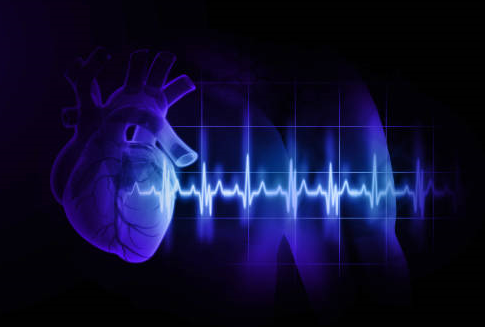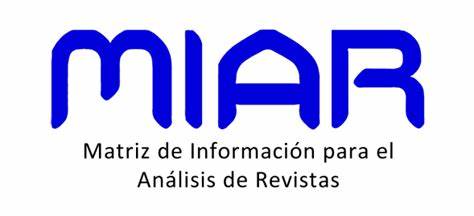Imágenes de inervación miocárdica: MIBG en práctica clínica
DOI:
https://doi.org/10.54502/msuceva.v2n2a3Palabras clave:
Imágenes, inervación cardíaca, insuficiencia cardíaca, función simpática, MIBGResumen
La 123I-metayodobencilguanidina (MIBG) es un análogo de norepinefrina radiomarcado que se puede usar para investigar la inervación simpática del miocardio. La gammagrafía con 123I-MIBG se ha investigado con interés en muchos contextos patológicos. En pacientes con insuficiencia cardiaca (IC) sistólica, la gammagrafía con 123I-MIBG puede detectar el deterioro funcional y la rarefacción de las terminales simpáticas (que se manifiestan como reducción de la relación corazón-mediastino [H/M] temprana y tardía en la gammagrafía planar) y aumento del flujo de salida simpático (que puede visualizarse como una alta tasa de lavado). Estos hallazgos se han asociado consistentemente con un peor resultado: más notablemente, un ensayo de fase 3, encontró que los pacientes con un H/M tardío 1.60, poseen una mayor incidencia de mortalidad cardiovascular y por todas las causas y arritmias potencialmente mortales durante un seguimiento de menos de 2 años. A pesar de estos hallazgos prometedores, la gammagrafía con 123I-MIBG aún no ha sido recomendada por las principales guías de IC como una herramienta para la estratificación del riesgo aditivo y nunca ha entrado en la etapa de adopción generalizada en la práctica clínica actual. La gammagrafía con 123I-MIBG también se ha evaluado en pacientes con infarto de miocardio, trastornos genéticos caracterizados por una mayor susceptibilidad a las arritmias ventriculares y varias otras condiciones caracterizadas por alteración de la inervación miocárdica simpática. En la presente revisión, se resumirá el estado del arte de la gammagrafía cardíaca con 123I-MIBG, los problemas actuales sin resolver y las posibles direcciones de la investigación futura.
Descargas
Métricas
Citas
Zelt J, deKemp R, Rotstein B, Nair G, Narula J, Ahmadi A, et al. Nuclear imaging of the cardiac sympathetic nervous system: a
disease-specific interpretation in heart failure. JACC Cardiovasc Imaging 2020; 13: 1036–54. https://doi.org/10.1016/j.jcmg.2019.01.042 DOI: https://doi.org/10.1016/j.jcmg.2019.01.042
Schroeder C, Jordan J: Norepinephrine uptake mechanisms in cardiovascular disease deserve our attention. J Cardiovasc Pharmacol 2011; 58: 406–8. https://doi.org/10.1097/FJC.0B013E31822EAE22 DOI: https://doi.org/10.1097/FJC.0b013e31822eae22
Eisenhofer G: The role of neuronal and extraneuronal plasma membrane transporters in the inactivation of peripheral catecholamines. Pharmacol Ther 2001; 91: 35–62. https://doi.org/10.1016/s0163-7258(01)00144-9 DOI: https://doi.org/10.1016/S0163-7258(01)00144-9
Pandit-Taskar N, Modak S: Norepinephrine transporter as a target for imaging and therapy. J Nucl Med Off Publ Soc Nucl Med 2017; 58: 39s–53s. https://doi.org/10.2967/jnumed.116.186833 DOI: https://doi.org/10.2967/jnumed.116.186833
Patel AD, Iskandrian AE: MIBG imaging. J Nucl Cardiol Off Publ Am Soc Nucl Cardiol 2002; 9: 75–94.
https://doi.org/10.1067/mnc.2002.121471 DOI: https://doi.org/10.1067/mnc.2002.121471
Kline R, Swanson D, Wieland D, Thrall J, Gross M, Pitt B, et al. Myocardial imaging in man with I-123 meta-iodobenzylguanidine. J Nucl Med Off Publ Soc Nucl Med 1981; 22: 129–32. PMID: 7463156.
Flotats A, Carrió I, Agostini D, Marcassa C, Schafers M, Aernout Somsem G, et al.: Proposal for standardization of 123I-metaiodobenzylguanidine (MIBG) cardiac sympathetic imaging by the EANM cardiovascular committee and the European council of nuclear cardiology. Eur J Nucl Med Mol Imaging 2010; 37: 1802–12. https://doi.org/10.1007/s00259-010-1491-4 DOI: https://doi.org/10.1007/s00259-010-1491-4
Radiation dose to patients from radiopharmaceuticals. A report of a task group of committees 2 of the international commission on radiological protection. Ann ICRP 1987; 18: 1–377. PMID: 3505163 DOI: https://doi.org/10.1016/0146-6453(87)90003-0
Verberne HJ, Verschure DO, Somsen GA, van Eck-Smit BL, Jacobson AF: Vascular time-activity variation in patients undergoing
I-MIBG myocardial scintigraphy: implications for quantification of cardiac and mediastinal uptake. Eur J Nucl Med Mol Imaging 2011; 38: 1132–8. https://doi.org/ 10.1007/s00259-011-1783-3 DOI: https://doi.org/10.1007/s00259-011-1783-3
Nakajima K, Matsumoto N, Kasai T, Matsuo S, Kiso K, Okuda K:Normal values and standardization of parameters in nuclear cardiology: Japanese Society of Nuclear Medicine working group database. Ann Nucl Med 2016; 30: 188–99. https://doi.org/ 10.1007/s12149-016-1065-z DOI: https://doi.org/10.1007/s12149-016-1065-z
Nakajima K, Okuda K, Matsuo S, Wakabayashi H, Kinuya S: Is (123)I-metaiodobenzylguanidine heart-to-mediastinum ratio dependent on age? From Japanese Society of Nuclear Medicine normal database. Ann Nucl Med 2018; 32: 175–81. DOI: https://doi.org/10.1007/s12149-018-1231-6
https://doi.org/ 10.1007/s12149-018-1231-6
Matsuo S, Nakajima K, Yamashina S, Sakata K, Momose M, Hashimoto J, et al.: Characterization of Japanese standards for myocardial sympathetic and metabolic imaging in comparison with perfusion imaging. Ann Nucl Med 2009; 23: 517–22.
https://doi.org/10.1007/s12149-009-0269-x DOI: https://doi.org/10.1007/s12149-009-0269-x
Jacobson AF, Travin MI: Impact of medications on mIBG uptake, with specific attention to the heart: comprehensive review of the literature. J Nucl Cardiol Off Publ Am Soc Nucl Cardiol 2015; 22: 980–93. https://doi.org/10.1007/s12350-015-0170-z DOI: https://doi.org/10.1007/s12350-015-0170-z
Carrió I, Cowie MR, Yamazaki J, Udelson J, Camici PG: Cardiac sympathetic imaging with mIBG in heart failure. JACC Cardiovasc Imaging 2010; 3: 92–100. https://doi.org/10.1016/j.jcmg.2009.07.014 DOI: https://doi.org/10.1016/j.jcmg.2009.07.014
Verberne HJ, Brewster LM, Somsen GA, van Eck-Smit BL: Prognostic value of myocardial 123I-metaiodobenzylguanidine (MIBG) parameters in patients with heart failure: a systematic review. Eur Heart J 2008; 29: 1147–59. https://doi.org/10.1093/eurheartj/ehn113 DOI: https://doi.org/10.1093/eurheartj/ehn113
Kuwabara Y, Tamaki N, Nakata T, Yamashina S, Yamazaki J:Determination of the survival rate in patients with congestive heart failure stratified by 123I-MIBG imaging: a meta-analysis from the studies performed in Japan. Ann Nucl Med 2011; 25:
–7. https://doi.org/10.1007/s12149-010-0452-0 DOI: https://doi.org/10.1007/s12149-010-0452-0
Merlet P, Valette H, Dubois-Rande J, Moyse D, Duboc D, Dove P.et al.: Prognostic value of cardiac metaiodobenzylguanidine imaging in patients with heart failure. J Nucl Med Off Publ Soc Nucl Med 1992; 33: 471–7.
Ebina T, Takahashi N, Mitani I, et al.: Clinical implications of cardiac (123)I-meta-iodobenzylguanidine scintigraphy and cardiac
natriuretic peptides in patients with heart disease. Nucl Med Commun 2002; 23: 795–801. https://doi.org/10.1097/00006231-200208000-00014 DOI: https://doi.org/10.1097/00006231-200208000-00014
Jacobson A, Senior R, Cerqueira M, Wong N, Thomas G, Lopez V, et al.: Myocardial iodine-123 meta-iodobenzylguanidine imaging and cardiac events in heart failure. Results of the prospective ADMIRE-HF (AdreView Myocardial Imaging for Risk Evaluation in Heart Failure) study. J Am Coll Cardiol 2010; 55: 2212–21. https://doi.org/10.1016/j.jacc.2010.01.014 DOI: https://doi.org/10.1016/j.jacc.2010.01.014
Jacobson AF, Lombard J, Banerjee G, Camici PG: 123I-mIBG scintigraphy to predict risk for adverse cardiac outcomes in heart failure patients: design of two prospective multicenter international trials. J Nucl Cardiol Off Publ Am Soc Nucl Cardiol 2009; 16: 113–21. https://doi.org/10.1007/s12350-008-9008-2 DOI: https://doi.org/10.1007/s12350-008-9008-2
Piña IL, Carson P, Lindenfeld J, Archambault WT, Jacobson AF: Persistence of (123)I-mIBG prognostic capability in relation to medical therapy in heart failure (from the ADMIRE-HF trial). The Am J Cardiol 2017; 119: 434–9. https://doi.org/ 10.1016/j.amjcard.2016.10.024 DOI: https://doi.org/10.1016/j.amjcard.2016.10.024
Narula J, Gerson M, Thomas GS, Cerqueira MD, Jacobson AF: 123I-MIBG imaging for prediction of mortality and potentially fatal events in heart failure: the ADMIRE-HFX study. J Nucl Med Off Publ Soc Nucl Med 2015; 56: 1011–8. https://doi.org/10.2967/jnumed.115.156406 DOI: https://doi.org/10.2967/jnumed.115.156406
Ketchum E, Jacobson A, Caldwell J, Senior R, Cerqueira M, Thomas G, et al.: Selective improvement in Seattle Heart Failure Model risk stratification using iodine-123 meta-iodobenzylguanidine imaging. J Nucl Cardiol Off Publ Am Soc Nucl Cardiol 2012; 19: 1007–16. https://doi.org/ 10.1007/s12350-012-9603-0 DOI: https://doi.org/10.1007/s12350-012-9603-0
Koutelou M, Katsikis A, Flevari P, Theodorakis G, Livanis E, Georgiadis M, et al.: Predictive value of cardiac autonomic indexes
and MIBG washout in ICD recipients with mild to moderate heart failure. Ann Nucl Med 2009; 23: 677–84.
https://doi.org/10.1007/s12149-009-0289-6 DOI: https://doi.org/10.1007/s12149-009-0289-6
Arora R, Ferrick K, Nakata T, Kaplan R, Rozengarten M, Latif F, et al.: 2003I-123 MIBG imaging and heart rate variability analysis to predict the need for an implantable cardioverter defibrillator. J Nucl Cardiol Off Publ Am Soc Nucl Cardiol, 10: 121–31. https://doi.org/ 10.1067/mnc.2003.2 DOI: https://doi.org/10.1067/mnc.2003.2
Boogers M, Borleffs C, Henneman M, Van Bommel R, van Ramshorst J, Boersma E, et al.: Cardiac sympathetic denervation assessed with 123-iodine metaiodobenzylguanidine imaging predicts ventricular arrhythmias in implantable cardioverter-defibrillator patients. J Am Coll Cardiol, 2010. 55: 2769–77. https://doi.org/10.1016/j.jacc.2009.12.066 DOI: https://doi.org/10.1016/j.jacc.2009.12.066
Nishisato K, Hashimoto A, Nakata T, Doi Y, Yamamoto H, Nagahara D, et al.: Impaired cardiac sympathetic innervation and myocardial perfusion is related to lethal arrhythmia: quantification of cardiac tracers in patients with ICDs. J Nucl Med Off Publ Soc Nucl Med 2010; 51: 1241–9. https://doi.org/10.2967/jnumed.110.074971 DOI: https://doi.org/10.2967/jnumed.110.074971
Agostini D, Belin A, Amar M, Darlas Y, Hamon M, Grollier G, et al.: Improvement of cardiac neuronal function after carvedilol treatment in dilated cardiomyopathy: a 123I-MIBG scintigraphic study. J Nucl Med Off Publ Soc Nucl Med 2000; 41: 845–51. PMID: 10809201
Cha Y, Oh J, Miyazaki C, Rea R, Shen W, Asirvatham S, et al.: Cardiac resynchronization therapy upregulates cardiac autonomic
control. J Cardiovasc Electrophysiol 2008; 19: 1045–52. https://doi.org/10.1111/j.1540-8167.2008.01190.x DOI: https://doi.org/10.1111/j.1540-8167.2008.01190.x
Suwa M, Otake Y, Moriguchi A, Ito T, Hirota Y, Kawamura K, et al.: Iodine-123 metaiodobenzylguanidine myocardial scintigraphy
for prediction of response to beta-blocker therapy in patients with dilated cardiomyopathy. Am Heart J 1997; 133: 353–8.
https://doi.org/10.1016/s0002-8703(97)70232-1 DOI: https://doi.org/10.1016/S0002-8703(97)70232-1
Kasama S, Toyama T, Kumakura H, Takayama Y, Ichikawa S, Suzuki T, et al.: Effects of perindopril on cardiac sympathetic nerve activity in patients with congestive heart failure: comparison with enalapril. Eur J Nucl Med Mol Imaging 2005; 32: 964–71. https://doi.org/10.1007/s00259-005-1786-z DOI: https://doi.org/10.1007/s00259-005-1786-z
Matsui T, Tsutamoto T, Maeda K, Kusukawa J, Kinoshita M: Prognostic value of repeated 123I-metaiodobenzylguanidine imaging in patients with dilated cardiomyopathy with congestive heart failure before and after optimized treatments–comparison with neurohumoral factors. Circ J Off J Jpn Circ Soc 2002; 66:
–43. https://doi.org/10.1253/circj.66.537 DOI: https://doi.org/10.1253/circj.66.537
Sakata K, Shirotani M, Yoshida H, Kurata C: Iodine-123 metaiodobenzylguanidine cardiac imaging to identify and localize vasospastic angina without significant coronary artery narrowing. J Am Coll Cardiol 1997; 30: 370–6.
https://doi.org/10.1016/s0735-1097(97)00159-9 DOI: https://doi.org/10.1016/S0735-1097(97)00159-9
Inobe Y, Kugiyama K, Miyagi H, Ohgushi M, Tomiguchi S, Takahashi M, et al.: Long-lasting abnormalities in cardiac sympathetic
nervous system in patients with coronary spastic angina: quantitative analysis with iodine 123metaiodobenzylguanidine myocardial scintigraphy. Am Heart J 1997; 134: 112–8. https://doi.org/10.1016/s0002-8703(97)70114-5 DOI: https://doi.org/10.1016/S0002-8703(97)70114-5
Langer A, Freeman MR, Josse RG, Armstrong PW: Metaiodobenzylguanidine imaging in diabetes mellitus: assessment of
cardiac sympathetic denervation and its relation to autonomic dysfunction and silent myocardial ischemia. J Am Coll Cardiol 1995; 25: 610–8. https://doi.org/10.1016/0735-1097(94)00459-4 DOI: https://doi.org/10.1016/0735-1097(94)00459-4
Fallavollita JA, Canty JM, Jr.: Dysinnervated but viable myocardium in ischemic heart disease. J Nucl Cardiol Off Publ Am Soc Nucl Cardiol 2010; 17: 1107–15. https://doi.org/10.1007/s12350-010-9292-5 DOI: https://doi.org/10.1007/s12350-010-9292-5
Matsunari I, Schricke U, Bengel F, Haase H, Barthel P, Schmidt G, et al.: Extent of cardiac sympathetic neuronal damage is determined by the area of ischemia in patients with acute coronary syndromes. Circulation 2000; 101: 2579–85.
https://doi.org/10.1161/01.CIR.101.22.2579 DOI: https://doi.org/10.1161/01.CIR.101.22.2579
Zipes DP: Ischemic modulation of myocardial innervation. Giornale italiano di cardiologia 1992; 22: 615–21.
Sasano T, Abraham M, Chang K, Ashikaga H, Mills J, Holt D,et al.: Abnormal sympathetic innervation of viable myocardium and the substrate of ventricular tachycardia after myocardial infarction. J Am Coll Cardiol 2008; 51: 2266–75.
https://doi.org/10.1016/j.jacc.2008.02.062 DOI: https://doi.org/10.1016/j.jacc.2008.02.062
Minardo J, Tuli M, Mock B, Weiner R, Pride H, Wellman H, et al.: Scintigraphic and electrophysiological evidence of canine myocardial sympathetic denervation and reinnervation produced by myocardial infarction or phenol application. Circulation 1988; 78: 1008–19. https://doi.org/10.1161/01.CIR.78.4.1008 DOI: https://doi.org/10.1161/01.CIR.78.4.1008
Hartikainen J, Kuikka J, M€antysaari M, L€ansimies E, Py€or€al€a K: Sympathetic reinnervation after acute myocardial infarction. The Am J Cardiol 1996; 77: 5–9. https://doi.org/10.1016/s0002-9149(97)89125-4 DOI: https://doi.org/10.1016/S0002-9149(97)89125-4
Bengel FM, Barthel P, Matsunari I, Schmidt G, Schwaiger M: Kinetics of 123I-MIBG after acute myocardial infarction and reperfusion therapy. J Nucl Med Off Publ Soc Nucl Med 1999; 40: 904–10. PMID: 10452304.
Imamura Y, Ando H, Mitsuoka W, Egashira S, Masaki H, Ashihara T, et al.: Iodine-123 metaiodobenzylguanidine images reflect
intense myocardial adrenergic nervous activity in congestive heart failure independent of underlying cause. J Am Coll Cardiol 1995;
: 1594–9. https://doi.org/10.1016/0735-1097(95)00374-6 DOI: https://doi.org/10.1016/0735-1097(95)00374-6
Wakabayashi T, Nakata T, Hashimoto A, Yuda S, Tsuchihashi K, Travin M, et al.: Assessment of underlying etiology and cardiac sympathetic innervation to identify patients at high risk of cardiac death. J Nucl Med Off Publ Soc Nucl Med 2001; 42: 1757–67. PMID: 11752070.
Bax J, Kraft O, Buxton A, Gunnar Fjeld J, Parízek P, Agostini D, et al.: 123 I-mIBG scintigraphy to predict inducibility of ventricular arrhythmias on cardiac electrophysiology testing: a prospective multicenter pilot study. Circ Cardiovasc Imaging 2008; 1:
–40. https://doi.org/10.1161/CIRCIMAGING.108.782433 DOI: https://doi.org/10.1161/CIRCIMAGING.108.782433
Sazonova S, Atabekov T, Batalov R, Mishkina A, Varlamova J, Zavadovsky K, et al.: Prediction of appropriate ICD therapy in patients with ischemic heart failure. J Nucl Cardiol Off Publ Am Soc Nucl Cardiol 2020. https://doi.org/10.1007/s12350-020-02321-y DOI: https://doi.org/10.1007/s12350-020-02321-y
Gimelli A, Menichetti F, Soldati E, Liga R, Scelza N, Zucchelli G, et al.: Predictors of ventricular ablation’s success: viability, innervation, or mismatch? J Nucl Cardiol Off Publ Am Soc Nucl Cardiol 2019, 28(1):175-183. https://doi.org/10.1007/s12350-018-01575-x DOI: https://doi.org/10.1007/s12350-018-01575-x
Ohshima S, Isobe S, Izawa H, Nanasato M, Ando A, Yamada A, et al.: 2005Cardiac sympathetic dysfunction correlates with abnormal myocardial contractile reserve in dilated cardiomyopathy patients. J Am Coll Cardiol, 46: 2061–8.
https://doi.org/10.1016/j.jacc.2005.08.046 DOI: https://doi.org/10.1016/j.jacc.2005.08.046
Ohshima S, Isobe S, Hayashi D, Abe S, Kato K, Murohara T: Myocardial 123I-MIBG scintigraphy predicts an impairment in myocardial functional reserve during dobutamine stress in patients with idiopathic dilated cardiomyopathy. Eur J Nucl Med Mol Imaging 2013; 40: 262–70. https://doi.org/10.1007/s00259-012-2256-z DOI: https://doi.org/10.1007/s00259-012-2256-z
Maeno M, Ishida Y, Shimonagata T, Hayashida K, Toyama T, Hirose Y, et al.: The significance of 201Tl/123I MIBG (metaiodobenzylguanidine) mismatched myocardial regions for predicting ventricular tachycardia in patients with idiopathic dilated cardiomyopathy. Kaku igaku The Jpn J Nucl Med 1993; 30: 1221–9. PMID: 8264112.
Christensen T, Bang L, Holmvang L, Skovgaard D, Oturai D, Søholm H, et al.: (123)I-MIBG scintigraphy in the subacute state of takotsubo cardiomyopathy. JACC Cardiovasc Imaging 2016; 9: 982–90. https://doi.org/10.1016/j.jcmg.2016.01.028 DOI: https://doi.org/10.1016/j.jcmg.2016.01.028
Cimarelli S, Sauer F, Morel O, Ohlmann P, Constantinesco A, Imperiale A: Transient left ventricular dysfunction syndrome: patho-physiological bases through nuclear medicine imaging. Int J Cardiol 2010; 144: 212–8.
https://doi.org/10.1016/j.ijcard.2009.04.025 DOI: https://doi.org/10.1016/j.ijcard.2009.04.025
Madias JE: Do we need MIBG in the evaluation of patients with suspected Takotsubo syndrome? Diagnostic, prognostic, and pathophysiologic connotations. Int J Cardiol 2016; 203: 783–4. https://doi.org/10.1016/j.ijcard.2015.11.046 DOI: https://doi.org/10.1016/j.ijcard.2015.11.046
Laursen A, Thune J, Hutchings M, Hasbak P, Kjaer A, Elming M, et al.: (123) I-MIBG imaging for detection of anthracyclineinduced cardiomyopathy. Clin Physiol Funct Imaging 2018 38: 176–85. https://doi.org/10.1111/cpf.12419 DOI: https://doi.org/10.1111/cpf.12419
Wakasugi S, Wada A, Hasegawa Y, Nakano S, Shibata N: Detection of abnormal cardiac adrenergic neuron activity in adriamycin-induced cardiomyopathy with iodine-125-metaiodobenzylguanidine. J Nucl Med Off Publ Soc Nucl Med 1992;
:208–14. PMID: 1732442.
Jeon TJ, Lee JD, Ha JW, Yang WI, Cho SH: Evaluation of cardiac adrenergic neuronal damage in rats with doxorubicin-induced
cardiomyopathy using iodine-1231 MIBG autoradiography and PGP 9.5 immunohistochemistry. Eur J Nucl Med 2000; 27: 686–93.
https://doi.org/10.1007/s002590050563 DOI: https://doi.org/10.1007/s002590050563
Bulten B, Verberne H, Bellersen L, Oyen W, Sabaté-Llobera A, Mavinkurve-Groothuis A, et al.: Relationship of promising
methods in the detection of anthracycline-induced cardiotoxicity in breast cancer patients. Cancer Chemother Pharmacol 2015; 76: 957–67. https://doi.org/10.1007/s00280-015-2874-9 DOI: https://doi.org/10.1007/s00280-015-2874-9
Nousiainen T, Vanninen E, Jantunen E, Remes J, Kuikka J, Hartikainen J: Anthracycline-induced cardiomyopathy: long-term effects on myocardial cell integrity, cardiac adrenergic innervation and fatty acid uptake. Clin Physiol (Oxford, England) 2001; 21: 123–8. https://doi.org/10.1046/j.1365-2281.2001.00292.x DOI: https://doi.org/10.1046/j.1365-2281.2001.00292.x
Cooper T, Willman VL, Jellinek M, Hanlon CR: Heart autotransplantation: effect on myocardial catecholamine and histamine.Science (New York, NY) 1962; 138: 40–1. https://doi.org/10.1126/science.138.3536.40 DOI: https://doi.org/10.1126/science.138.3536.40
De Marco T, Dae M, Yuen-Green M, Kumar S, Sudhir K, Keith F, et al.: Iodine-123 metaiodobenzylguanidine scintigraphic assessment of the transplanted human heart: evidence for late reinnervation. J Am Coll Cardiol 1995; 25: 927–31. DOI: https://doi.org/10.1016/0735-1097(94)00463-Z
https://doi.org/ 10.1016/0735-1097(94)00463-z
Norvell JE, Lower RR: Degeneration and regeneration of the nerves of the heart after transplantation. Transplantation 1973; 15: 337–44. https://doi.org/ 10.1097/00007890-197303000-00015 DOI: https://doi.org/10.1097/00007890-197303000-00015
Bengel FM, Ueberfuhr P, Ziegler SI, Nekolla S, Reichart B, Schwaiger M: Serial assessment of sympathetic reinnervation after orthotopic heart transplantation. A longitudinal study using PET and C-11 hydroxyephedrine. Circulation 1999; 99:1866–71. DOI: https://doi.org/10.1161/01.CIR.99.14.1866
https://doi.org/ 10.1161/01.cir.99.14.1866
Uberfuhr P, Ziegler S, Schwaiblmair M, Reichart B, Schwaiger M: Incomplete sympathic reinnervation of the orthotopically transplanted human heart: observation up to 13 years after heart transplantation. Eur J Cardiothorac Surg 2000; 17: 161–8. DOI: https://doi.org/10.1016/S1010-7940(99)00367-X
https://doi.org/ 10.1016/s1010-7940(99)00367-x
Bengel FM, Ueberfuhr P, Schiepel N, Nekolla SG, Reichart B, Schwaiger M: Effect of sympathetic reinnervation on cardiac performance after heart transplantation. The New Engl J Med 2001; 345: 731–8. https://doi.org/10.1056/NEJMoa010519 DOI: https://doi.org/10.1056/NEJMoa010519
Bengel FM, Ueberfuhr P, Hesse T, et al.: Clinical determinants of ventricular sympathetic reinnervation after orthotopic heart transplantation. Circulation 2002; 106: 831–5. https://doi.org/10.1161/01 DOI: https://doi.org/10.1161/01.CIR.0000025631.68522.9D
Aimo A, Buda G, Fontana M, Barison A, Vergaro G, Emdin M, et al.: Therapies for cardiac light chain amyloidosis: an update. Int
J Cardiol 2018; 271: 152–60. https://doi.org/ 10.1016/j.ijcard.2018.05.018
Aimo A, Castiglione V, Borrelli C, et al.: Oxidative stress and inflammation in the evolution of heart failure: from pathophysiology to therapeutic strategies. Eur J Prev Cardiol 2020: 2047487319870344. https://doi.org/ 10.1177/2047487319870344
Emdin M, Aimo A, Rapezzi C, Fontana M, Perfetto F, Seferovic P, et al.: Treatment of cardiac transthyretin amyloidosis: an update. Eur Heart J 2019; 40: 3699–706. https://doi.org/ 10.1093/eurheartj/ehz298 DOI: https://doi.org/10.1093/eurheartj/ehz298
Dorbala S, Ando Y, Bokhari S, Dispenzieri A, Falk R, Ferrari V, et al.: ASNC/AHA/ASE/EANM/HFSA/ISA/SCMR/SNMMI expert consensus recommendations for multimodality imaging in cardiac amyloidosis: Part 2 of 2-Diagnostic criteria and appropriate utilization. J Nucl Cardiol 2021, 14(7), e000030. https://doi.org/ 10.1161/HCI.0000000000000030
Piekarski E, Chequer R, Algalarrondo V, Eliahou L, Mahida B, Vigne N, et al.: Cardiac denervation evidenced by MIBG occurs earlier than amyloid deposits detection by diphosphonate scintigraphy in TTR mutation carriers. Eur J Nucl Med Mol Imaging 2018; 45: 1108–18. https://doi.org/ 10.1007/s00259-018-3963-x DOI: https://doi.org/10.1007/s00259-018-3963-x
Vergaro G, Genovesi D, Santonato V, Kusch A, et al.: Cardiac sympathetic denervation in wild-type transthyretin amyloidosis. Amyloid Int J Exp Clin Invest Off J Int Soc Amyloidosis 2020; 1–7.
Akutsu Y, Kaneko K, Kodama Y, Li H, Suyama J, Shinozuka A, et al.: Iodine-123 mIBG imaging for predicting the development of
atrial fibrillation. JACC Cardiovasc Imaging 2011; 4: 78–86. https://doi.org/ 10.1016/j.jcmg.2010.10.005 DOI: https://doi.org/10.1016/j.jcmg.2010.10.005
Arimoto T, Tada H, Igarashi M, Sekiguchi Y, Sato A, Koyama S, et al.: High washout rate of iodine-123-metaiodobenzylguanidine imaging predicts the outcome of catheter ablation of atrial fibrillation. J Cardiovasc Electrophysiol 2011; 22: 1297–304. https://doi.org/ 10.1111/j.1540-8167.2011.02123.x DOI: https://doi.org/10.1111/j.1540-8167.2011.02123.x
Wenning C, Lange P, Sch€ulke C, Vrachimis A, M€onnig G, Schober O, et al.: Pulmonary vein isolation in patients with paroxysmal atrial fibrillation is associated with regional cardiac sympathetic denervation. EJNMMI Res 2013; 3: 81. https://doi.org/ 10.1186/2191-219X-3-81 DOI: https://doi.org/10.1186/2191-219X-3-81
Lemery R, Ben-Haim S, Wells G, Ruddy TD: I-123-Metaiodobenzylguanidine imaging in patients with atrial fibrillation undergoing cardiac mapping and ablation of autonomic ganglia. Heart rhythm 2017; 14: 128–32. https://doi.org/ 10.1016/j.hrthm.2016.08.038 DOI: https://doi.org/10.1016/j.hrthm.2016.08.038
Stirrup J, Gregg S, Baavour R, Roth N, Breault C, Agostini D, et al.: Hybrid solid-state SPECT/CT left atrial innervation imaging for identification of left atrial ganglionated plexi: technique and validation in patients with atrial fibrillation. J Nucl Cardiol official Publ Am Soc Nucl Cardiol 2020. https://doi.org/ 10.1007/s12350-018-01535-5 DOI: https://doi.org/10.1007/s12350-018-01535-5
Teresínska A: I-123-MIBG cardiac innervation imaging in patients with atrial fibrillation. J Nucl Cardiol Off Publ Am Soc Nucl
Cardiol 2020, 6:1951-4. https://doi.org/ 10.1007/s12350-019-01601-6
Nagamachi S, Fujita S, Nishii R, Futami S, Tamura S, Mizuta M, et al.: Prognostic value of cardiac I-123 metaiodobenzylguanidine imaging in patients with non-insulin-dependent diabetes mellitus. J Nucl Cardiol Off Publ Am Soc Nucl Cardiol 2006; 13: 34–42. DOI: https://doi.org/10.1016/j.nuclcard.2005.11.009
https://doi.org/ 10.1016/j.nuclcard.2005.11.009
Treglia G, Cason E: Diagnostic performance of myocardial innervation imaging using MIBG scintigraphy in differential diagnosis
between dementia with lewy bodies and other dementias: a systematic review and ameta-analysis. J Neuroimaging 2012; 22: 111–7.https://doi.org/ 10.1111/j.1552-6569.2010.00532.x DOI: https://doi.org/10.1111/j.1552-6569.2010.00532.x
Guidelines for clinical use of cardiac nuclear medicine (JCS 2010)– digest version –. Circ J Off J Jpn Circ Soc 2012; 76: 761–7. DOI: https://doi.org/10.1253/circj.CJ-88-0019
https://doi.org/ 10.1253/circj.cj-88-0019

Descargas
Publicado
Cómo citar
Número
Sección
Licencia
Derechos de autor 2022 Aimo y Gimelli

Esta obra está bajo una licencia internacional Creative Commons Atribución-NoComercial-SinDerivadas 4.0.
Magna Scientia UCEVA proporciona un acceso abierto, libre y gratuito a su contenido, basado en el principio de que ofrecer al público un acceso libre a las investigaciones, ayuda a un mayor intercambio global del conocimiento. Lo cual, implica que los usuarios pueden leer, descargar, almacenar, imprimir, buscar, indexar y realizar enlaces a los textos completos de esta revista. Se permite distribuir los diversos artículos en las versiones post-print y oficial, sin previo permiso del autor o editor, considerando que el fin de este, no implica fines comerciales, ni la generación de obras derivadas; Solo se solicita la mención de la fuente así como la autoría. El titular del copyright será el o los autores que publiquen en Magna Scientia UCEVA.
Magna Scientia UCEVA está distribuida bajo los términos de la licencia https://creativecommons.org/licenses/by-nc-nd/4.0/deed.es




















